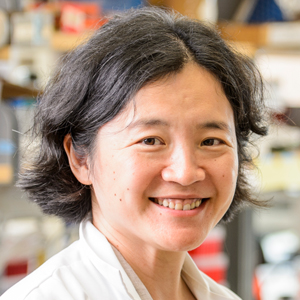
Biochemistry of the multitudes
Bacteria have thrived for eons in a wide range of environments, showcasing their remarkable evolutionary success. The survival of these ancient microbes requires a variety of molecular mechanisms, some shared with humans and others singular to bacteria. Bacteria in natural settings and host environments impact health, agriculture and environmental science. Significant advances have been made recently in understanding signaling pathways, metabolism, macromolecular biosynthesis processes and community behavior of these microbes.
Our symposium at Discover BMB aims to create a collaborative synergy between biologists studying various aspects of microbiology and those conducting mechanistic studies in the fields of molecular biology and biochemistry.
Submit an abstract
Abstract submission begins Sept. 14. If you submit by Oct. 12, you'll get a decision by Nov. 1. The regular submission deadline is Nov. 30. See the categories.
Our focus centers on three significant themes that have substantially advanced in mechanistic understanding in recent years. In the first, we explore how bacteria make, break and listen to small molecules that allow them to communicate and respond to each other and the environment. In the second, we investigate how macromolecular machines operate in bacteria, coordinating massively complex regulatory and responsive strategies. Finally, we highlight the vast web of interactions among bacteria, their viruses, the host cells they infect and their fellow bacteria, as we come to appreciate the communities of living systems that are present around us.
Keywords: Bacteria, signaling, nucleotide, regulation, interaction, community, macromolecular complexes, structure, microbes, environment.
Who should attend: Those intrigued by the realm of microbes.
Theme song: "We're spending most of lives living in a microbe’s paradise" (based on Coolio)
This session is powered by the overwhelming number of bacteria compared to us.
Microbial signaling, communication and metabolism
Signaling nucleotides in microbes

Jade Wang (chair), University of Wisconsin–Madison
Vincent T. Lee, University of Maryland, College Park
Ming Chen Hammond, University of Utah
Emily E. Weinert, Pennsylvania State University
Microbial machines
Peter Chien (chair), University of Massachusetts Amherst
Erin Goley, Johns Hopkins University
Monica Guo, University of Washington
Briana Burton, University of Wisconsin–Madison
Microbial communities
Chair: Erin Goley
Stavroula Hatzios, Yale University
John Whitney, McMaster University
Christopher S. Hayes, University of California, Santa Barbara
Ami S. Bhatt, Stanford University
Enjoy reading ASBMB Today?
Become a member to receive the print edition four times a year and the digital edition monthly.
Learn moreGet the latest from ASBMB Today
Enter your email address, and we’ll send you a weekly email with recent articles, interviews and more.
Latest in Science
Science highlights or most popular articles

Exploring the link between lipids and longevity
Meng Wang will present her work on metabolism and aging at the ASBMB Annual Meeting, March 7-10, just outside of Washington, D.C.

Defining a ‘crucial gatekeeper’ of lipid metabolism
George Carman receives the Herbert Tabor Research Award at the ASBMB Annual Meeting, March 7–10, just outside of Washington, D.C.

The science of staying strong
Muscles power every movement, but they also tell the story of aging itself. Scientists are uncovering how strength fades, why some species resist it and what lifestyle and molecular clues could help preserve muscle health for life.

Bacteriophage protein could make queso fresco safer
Researchers characterized the structure and function of PlyP100, a bacteriophage protein that shows promise as a food-safe antimicrobial for preventing Listeria monocytogenes growth in fresh cheeses.

Building the blueprint to block HIV
Wesley Sundquist will present his work on the HIV capsid and revolutionary drug, Lenacapavir, at the ASBMB Annual Meeting, March 7–10, in Maryland.

Gut microbes hijack cancer pathway in high-fat diets
Researchers at the Feinstein Institutes for Medical Research found that a high-fat diet increases ammonia-producing bacteria in the gut microbiome of mice, which in turn disrupts TGF-β signaling and promotes colorectal cancer.


